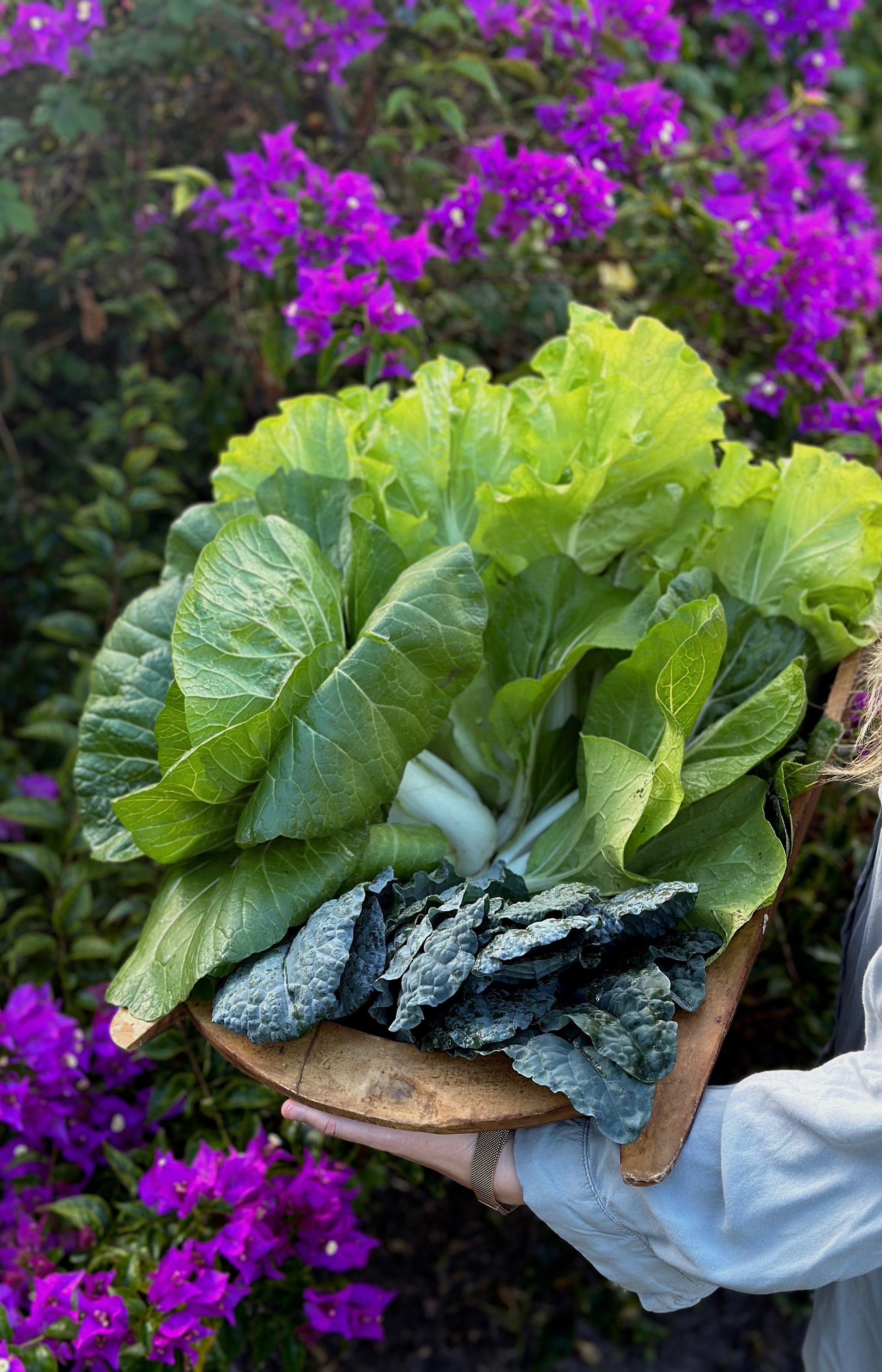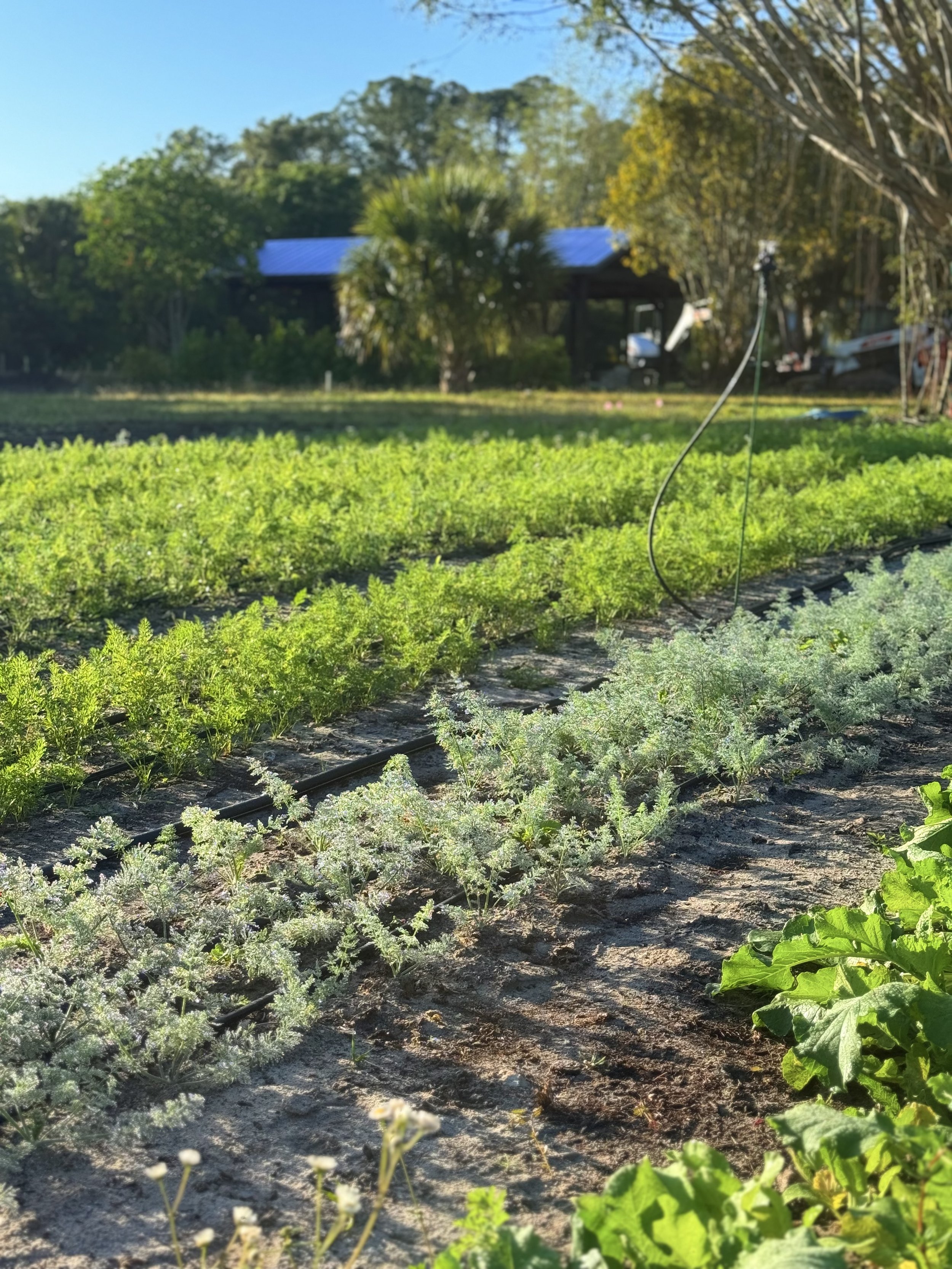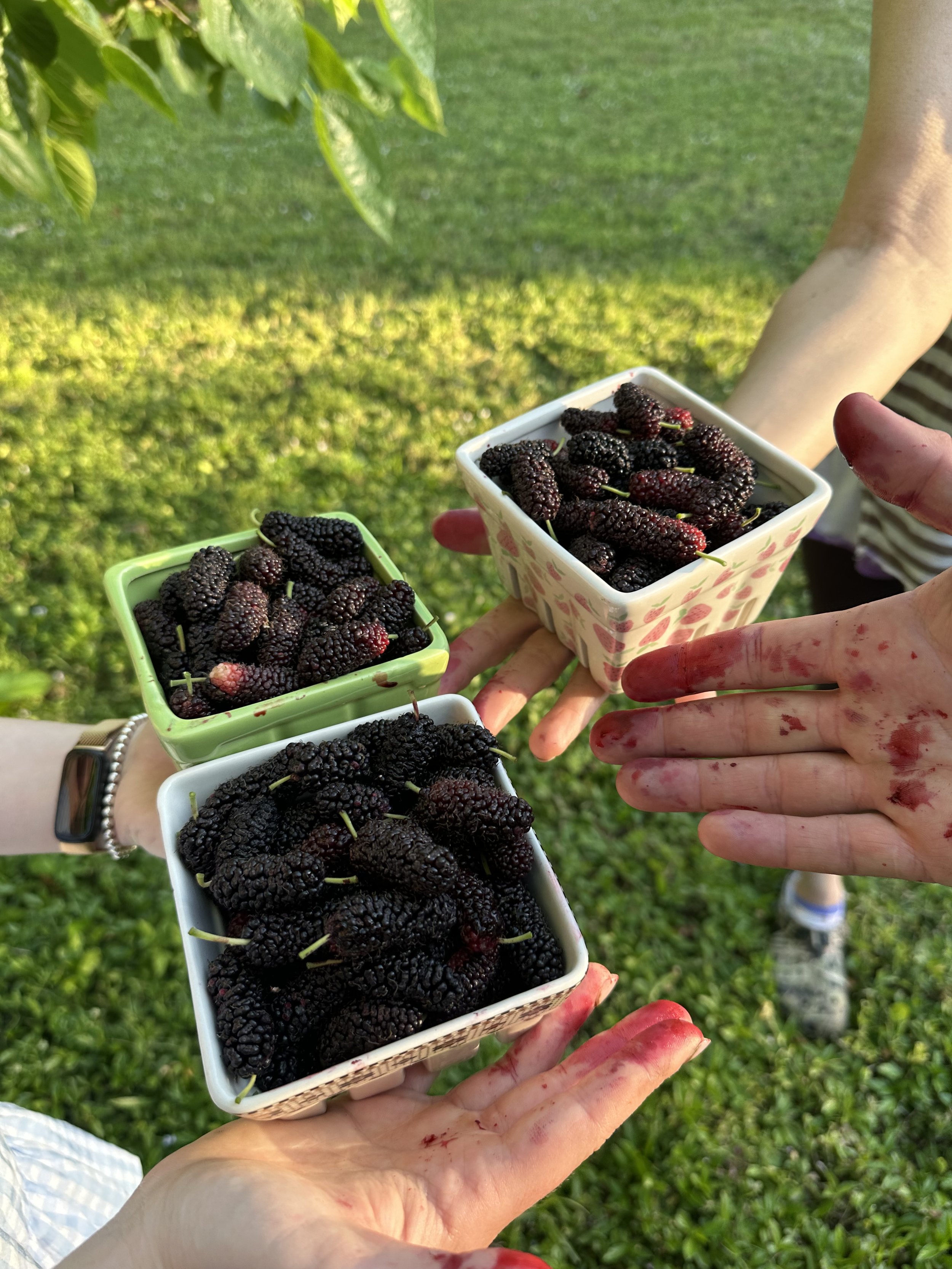Our mission
fresh, safe, clean food is vital to good health.
The Fox Valleyaire is a family-owned and operated farm founded with a dedication to growing the cleanest and safest produce that Florida has to offer. We are 100% committed to true regenerative agricultural practices and reject the use of chemical fertilizers, pesticides, embedded plastics, herbicides, and poisons. This steadfast commitment ensures that our produce remains pure and unadulterated, free from the misrepresentation often obscured by false labels.
Our mission is to provide our families, clients, and community with access to real, clean, safe, organic produce. By adhering to regenerative methods, we prioritize soil health, biodiversity, and ecological balance, yielding crops of exceptional nutritional quality. This approach not only sustains the environment but also delivers food that supports the well-being of those we serve.
We aim to help farmers and consumers alike learn how to improve their health and practices through regenerative methods. Through education and outreach, we seek to empower our community with the knowledge to embrace sustainable agriculture. In doing so, we strive to foster a healthier, more resilient food system for present and future generations.
Chronic illness has a stranglehold on American society, with 60% of Americans suffering from preventable conditions, primarily stemming from metabolic dysfunction within the body. This is not happening around the world, it is happening here and now.
Over 10,000 artificially produced ingredients are approved by the FDA for use in the American food system which are not permitted in other comparable nations.
This crisis is measurably driven by a harmful nexus of the industrialized food, chemical, and “healthcare” corporations.
In most cases the only way to break free from this vicious cycle is to reject ultra-processed foods completely and choose fresh, whole foods from farms that prioritize trust and transparency. Nutrition, disease prevention and healthy living are at the core of our ethos as a business and a farm.
There is no uniform approach to farming and agriculture. However, the critical, non-negotiable principles must be complete honesty and transparency. Without them we are handing over our health and wellness to a profit driven system that has monetized chronic illness in the United States for far too long.
-

Regenerative Agriculture
Regenerative agriculture is an innovative farming approach focused on restoring and enhancing the health of ecosystems through sustainable practices. It emphasizes principles such as minimal soil disturbance, crop diversity, cover cropping, and the integration of livestock to rebuild soil organic matter, improve water retention, and sequester carbon. Unlike conventional agriculture, which often depletes natural resources, regenerative agriculture seeks to mimic natural ecological processes, fostering resilience and long-term productivity in agricultural systems.
The importance of regenerative agriculture lies in its potential to address pressing global challenges, including climate change, soil degradation, and biodiversity loss. By enhancing soil health, it increases carbon sequestration, thereby mitigating greenhouse gas emissions. Furthermore, it promotes biodiversity by creating habitats for various species and reduces reliance on synthetic inputs like fertilizers and pesticides, which can harm ecosystems. This holistic approach not only sustains food production but also contributes to environmental restoration, making it a critical strategy for a sustainable future.
Rejecting ultra-processed foods in favor of local produce aligns with both health and environmental benefits. Ultra-processed foods, often high in sugars, unhealthy fats, and artificial additives, are linked to chronic conditions such as obesity, diabetes, and cardiovascular disease. In contrast, locally sourced produce, typically fresher and less processed, retains higher nutrient levels and supports balanced diets. Environmentally, local food systems reduce the carbon footprint associated with transportation and industrial processing, while supporting regenerative farmers who prioritize ecological stewardship over mass production.
Regenerative agricultural practices are associated with higher nutritional values in food due to their focus on soil health. Research indicates that crops grown in nutrient-rich, biologically active soils contain elevated levels of vitamins, minerals, and antioxidants compared to those from depleted soils reliant on chemical inputs. The integration of diverse crops and livestock enhances nutrient cycling, enriching the soil microbiome and, consequently, the nutritional quality of the produce. This synergy between ecological management and human health underscores the value of regenerative agriculture in fostering a more nourishing food system.
In 2019, General Mills, the manufacturer of Cheerios, Yoplait and Annie’s Mac and Cheese (among other products), announced it would begin sourcing a portion of its corn, wheat, dairy and sugar from farmers who were engaged in regenerative agriculture practices and committed to advancing the practice of regenerative agriculture on one million acres of land by 2030. In early 2020, Whole Foods announced regenerative agriculture would be the No. 1 food trend and, in spite of the pandemic and the rapid growth of online shopping overshadowing the trend, business interest in the field still spiked by 138%.
-

Big Food - Big Poison
There is nothing more profitable in todays society than a sick child.
70 years ago, roughly 6% of Americans suffered from chronic illness. Today that number is 60%
Between 2019 and 2030, cancer rates are predicted to rise 30% in young people.
By 2050, we predict the total number of incident cases to increase by almost 50% as a result of the growth and aging of the US population.
A greater emphasis on cancer risk reduction is needed to counter these trends.
The processed food industry was born out of the cigarette industry as tobacco stock declined. Scientists from the tobacco groups were sent over to the food research side of their companies to find ways to make nutrient deficient foods more addicting and thus profitable. This is why the foods in our grocery stores are filled with ingredients we have never heard of and cannot even pronounce.
While industrialized farming practices are legal within the regulatory framework, it is critical for consumers to understand the costs of intensive forms of agriculture on public health. Industrialized agriculture delivers inexpensive, low-nutrient food in excessive quantities.
The large-scale methods by which this food is produced also generates massive amounts of animal waste and runoff laden with synthetic fertilizers and pesticides, all of which degrades our soil, water and air. According to medical experts, bacterial resistance to antibiotics is on the rise, in part due to the excessive use of the drugs on factory farms, posing new and more deadly threats of infectious disease.
The laborers who maintain large-scale farms are themselves at higher risk for respiratory problems, workplace injuries and certain forms of cancer.
-

Why America needs small farms
Small farms play a vital role in the American agricultural landscape, contributing to local economies, community resilience, and sustainable food systems. They often prioritize diverse crop production and direct-to-consumer sales, fostering food security and preserving traditional farming knowledge. Unlike large-scale operations, small farms tend to maintain closer ties to their communities, supporting rural livelihoods and reducing dependence on industrialized supply chains. Their scale allows for greater adaptability to local conditions, enabling them to respond effectively to environmental challenges and market demands.
In certain contexts, small farms can outperform large farms due to their ability to implement innovative and sustainable practices more readily. With fewer acres to manage, small farmers can focus on soil health, crop rotation, and regenerative techniques, often yielding higher per-acre productivity and nutritional quality. Studies suggest that small farms, by emphasizing biodiversity and avoiding monoculture, can achieve greater resilience against pests, diseases, and climate variability. This flexibility contrasts with the resource-intensive, standardized approaches of large farms, which may prioritize volume over ecological or nutritional outcomes.
Retaining American farmland is critical to national sovereignty, economic stability, and food security, particularly in the face of increasing foreign ownership. Keeping farmland under domestic control ensures that agricultural priorities align with the needs of American citizens rather than foreign interests, which may view land as a speculative investment rather than a productive resource. Foreign-held land can lead to reduced access for local farmers, driving up prices and exacerbating the loss of rural heritage. Protecting farmland preserves the capacity to feed the nation independently, safeguarding against global supply chain disruptions.
Recent data underscores the urgency of this issue. Between 2001 and 2016, the United States lost approximately 11 million acres of farmland to development, according to the American Farmland Trust. Additionally, foreign investment in U.S. agricultural land has risen sharply, with foreign entities holding 45.9 million acres by 2023—a 1.6 million-acre increase from 2022—per the American Farm Bureau Federation. This represents 3.61% of total agricultural land, with Canadian investors controlling about one-third. Such trends highlight the need to prioritize domestic stewardship of this finite resource.
Biodiversity Guardians: Small farms play a vital role in preserving biodiversity.
Sustainable Practices: Many small farms embrace sustainable and regenerative farming practices.
Community Connection: Small farms build community connections.
Preserving Cultural Heritage: Small farms help preserve our cultural heritage.
Economic Resilience: Communities with more small farms have higher incomes, lower unemployment, and lower income inequality.
Educational Hubs: Small farms serve as educational centers.
Large-scale, industrial agriculture is often held up as the solution for feeding the world’s growing population. But small farms—with about 25 acres or less—along with family-run operations produce over 70 percent of the world’s food.
By growing heirloom and other non-commercial varieties, small farms bolster biodiversity and increase food security. With only 12 plants and 5 animal species making up 75 percent of what the world eats, food systems are vulnerable to natural disasters and disease outbreak, whereas regenerative agriculture practices show resiliency in the face of common conventional farming obstacles.


“The soil is the great connector of lives, the source and destination of all. It is the healer and restorer and resurrector, by which disease passes into health, age into youth, death into life. Without proper care for it we can have no community, because without proper care for it we can have no life.”
— Wendell Berry, The Unsettling of America: Culture and Agriculture










